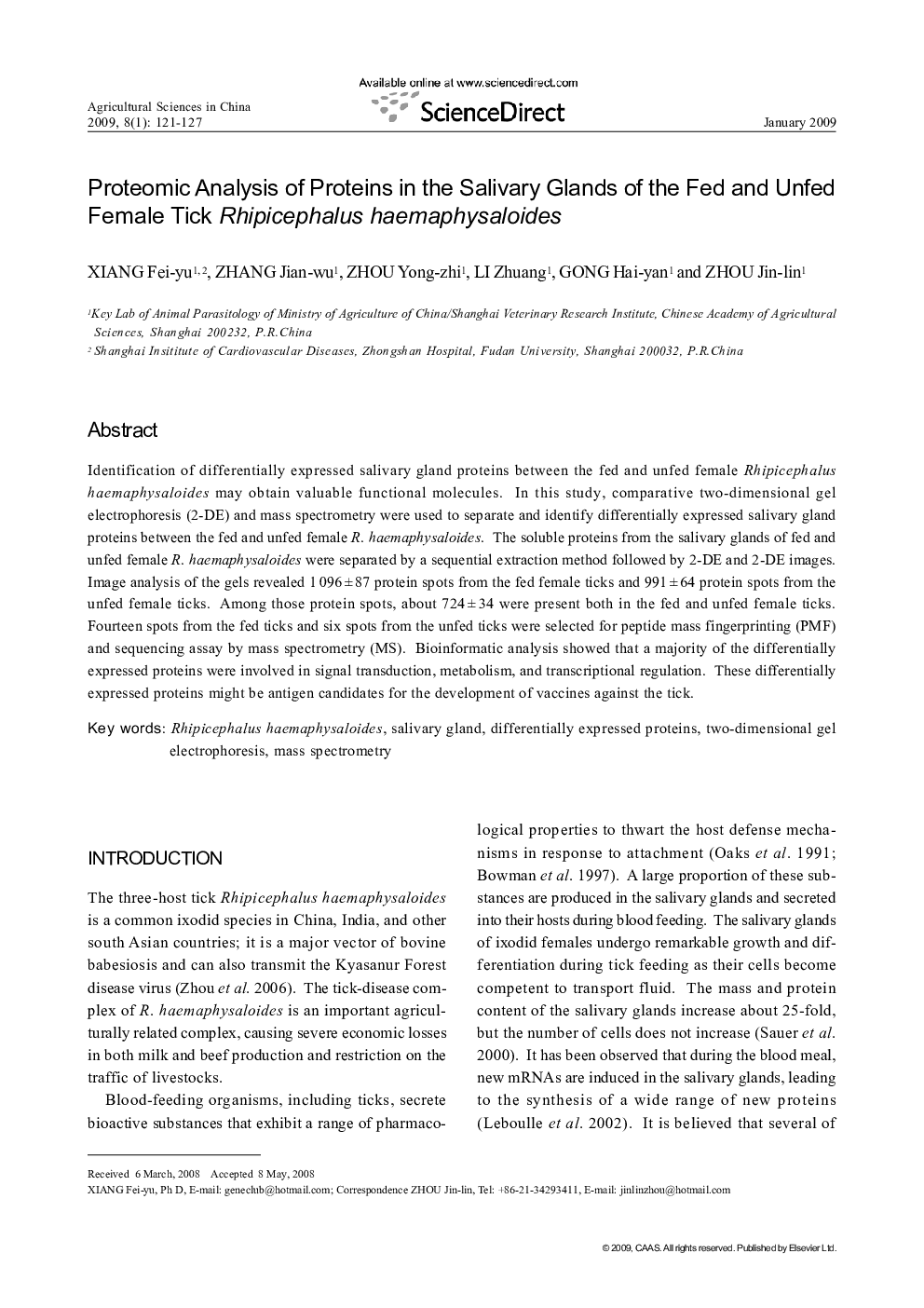| Article ID | Journal | Published Year | Pages | File Type |
|---|---|---|---|---|
| 4490495 | Agricultural Sciences in China | 2009 | 7 Pages |
Identification of differentially expressed salivary gland proteins between the fed and unfed female Rhipicephalus haemaphysaloides may obtain valuable functional molecules. In this study, comparative two-dimensional gel electrophoresis (2-DE) and mass spectrometry were used to separate and identify differentially expressed salivary gland proteins between the fed and unfed female R. haemaphysaloides. The soluble proteins from the salivary glands of fed and unfed female R. haemaphysaloides were separated by a sequential extraction method followed by 2-DE and 2-DE images. Image analysis of the gels revealed 1 096 ±87 protein spots from the fed female ticks and 991±64 protein spots from the unfed female ticks. Among those protein spots, about 724 ± 34 were present both in the fed and unfed female ticks. Fourteen spots from the fed ticks and six spots from the unfed ticks were selected for peptide mass fingerprinting (PMF) and sequencing assay by mass spectrometry (MS). Bioinformatic analysis showed that a majority of the differentially expressed proteins were involved in signal transduction, metabolism, and transcriptional regulation. These differentially expressed proteins might be antigen candidates for the development of vaccines against the tick.
